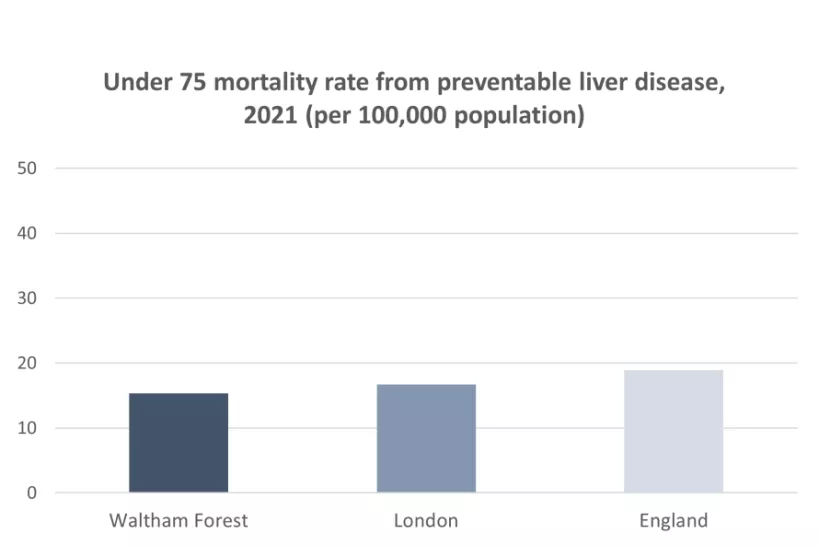Last updated: 3 June 2024
Next review: 3 December 2024
This content is part of the Waltham Forest JSNA. To see other JSNA content, visit the JSNA landing page
Premature mortality includes deaths occurring under the age of 75. Preventable mortality is defined as deaths where all or most deaths could potentially be avoided through effective public health interventions in the broadest sense.
Ninety percent of liver disease in the UK is due to alcohol, obesity and viral hepatitis and is therefore preventable. Liver disease is one of the biggest causes of death in those aged 35 to 49 years old. Liver diseases are the only broad category of causes of death for which numbers of preventable deaths have been increasing across England, rising from 17 deaths per 100,000 in 2012 to 24 per 100,000 in 2020.
There were 15.3 deaths per 100,000 population in Waltham Forest from liver disease that was considered preventable in 2021. Like other preventable mortality indicators, this was below the London and England averages (16.7 and 18.9 per 100,000 respectively) but these differences were not considered significant.
As with other causes of preventable mortality, there is a strong relationship between deprivation and preventable liver disease, with the most deprived areas having approximately twice as many deaths than the least deprived. Men are also significantly more likely to die from preventable liver disease than women.
The reasons behind the increase in mortality rates from liver disease are not fully understood, but studies suggest that levels of alcohol consumption amongst higher-risk drinkers have increased since the onset of the COVID-19 pandemic.

Source: OHID Public Health Outcomes Framework. Data based on Office for National Statistics source data. Date accessed: 07 July 2023.